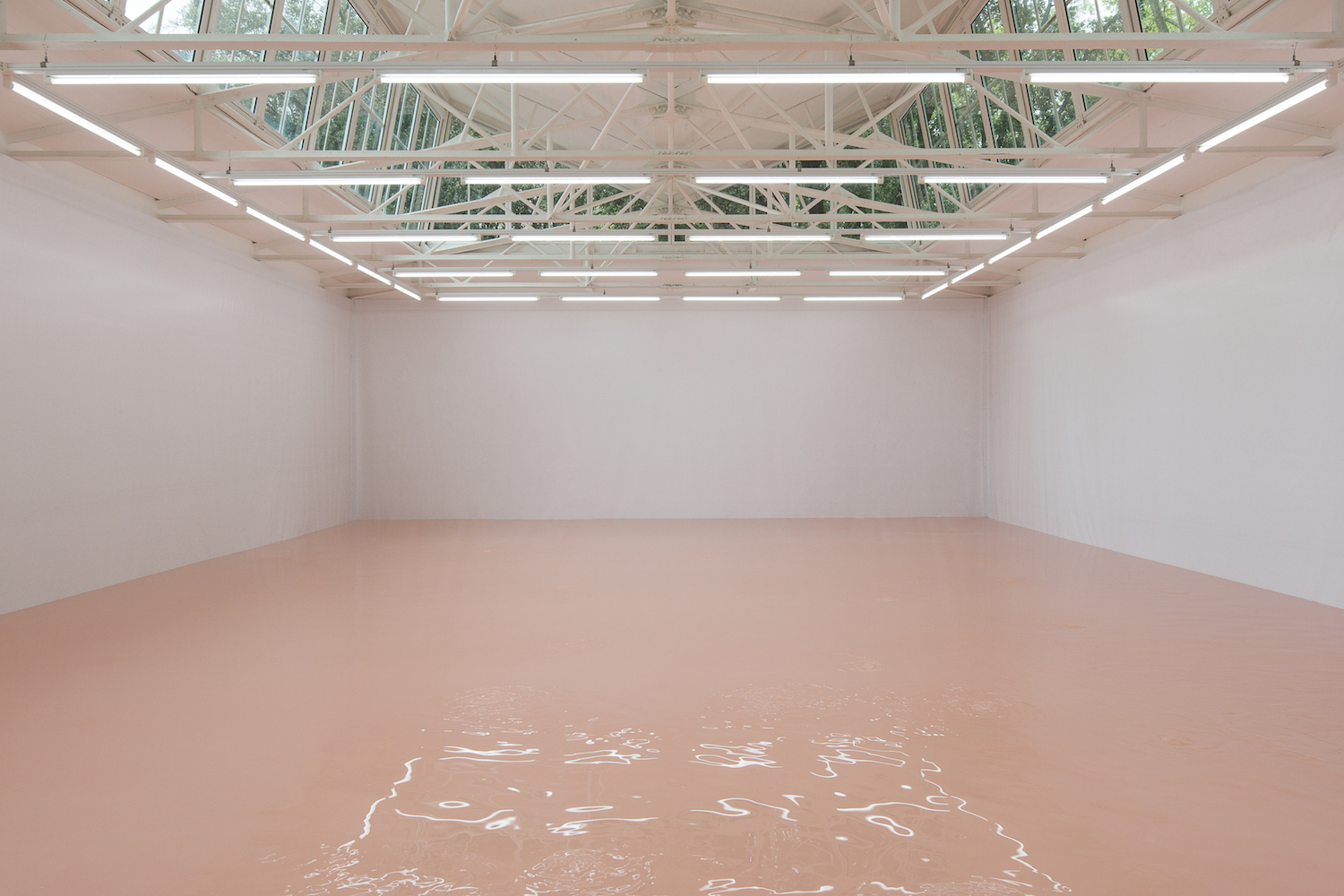After the occupation of the Guggenheim’s local branch during the opening week of the Biennale, the Gulf Labor Artist Coalition (GLC) made a return to Venice, this time in an official capacity.
Invited by curator Okwui Enwezor, members of the coalition shied away from creating a physical installation or work of art, conscious of the risk of turning their research into a reified, albeit critical, object of contemplation — a bit like the colossal pair of phoenixes hovering above the water at the very end of the Arsenale, which were made by Chinese artist Xu Bing using the worn-out tools of migrant workers employed in the construction of the World Financial Centre in Beijing. GLC opted instead to organize a series of plenary sessions that took place in the Arena, at the Central Pavilion, during the period from July 29 to August 9th.
“Who is building the Guggenheim Abu Dhabi, the NYU campus and the new branch of the Louvre?” By answering these simple interrogatives, GLC revealed the tawdry reality beneath the glossy surface of museum and university branches that are being built on Saadiyat Island according to the designs of starchitects such as Frank Gehry, Jean Nouvel, Zaha Hadid and Norman Foster. The GLC 2015 report that was released during the inaugural event made evident the shadow of hard labor lurking behind the policed veneer of high culture. The Gulf: High Culture/Hard Labor is the title of a book edited by Andrew Ross, launched on the same day. Those laboring on the construction sites, we are told, are migrant workers who arrive from poor countries heavily indebted as a result of recruitment and transit fees. Once in the UAE they are deprived of their passports, housed in sub-standard labor camps, paid much less than they were promised, and forced to endure a punishing work regime. If they protest publicly, they risk arrest, beatings and deportation.
For five years, GLC has been pressuring Western cultural brands to ensure worker protections, using a mixed strategy that combines the withdrawal from institutions — in the form of a boycott of the Guggenheim Abu Dhabi initiated in 2011 — with a more nuanced form of dissenting participation, of which the contribution to the Biennial can be considered an example. The more conventionally artistic offshoot of the project can be found in 52 Weeks, a year-long campaign in which artists, writers and activists contributed a work, text or action each week to highlight the deplorable living and working conditions of migrant workers in Abu Dhabi. On a different level, the coalition has pursued direct on-site research by interviewing workers, both in India and Abu Dhabi, and visiting labor camps. It also initiated negotiations with the Guggenheim Abu Dhabi, promising to lift the boycott in exchange for the acceptance of an omnibus reform providing debt relief, wage increases and the right to independent representation. In this sense, GLC behaves in a manner that is more akin to the trade union’s modus operandi. It is no coincidence that artists Walid Raad and Shaina Anand were joined on stage by representatives of the International Trade Union Confederation.
The discussion touched upon the entry bans the UAE issued against three members of the coalition — sociologist Andrew Ross and artists Walid Raad and Ashok Sukumaran. If preventing labor advocates to access workers and workplaces is nothing new in the workers’ struggles, in this case it takes the additional meaning of a curtailment of artistic and academic freedoms, thus casting a stain of illiberalism on those very cultural institutions intended to provide the UAE with a progressive facade. The crackdown on censorship, paradoxically, has drawn greater attention to the Saadiyat Island case, especially within the specialized art world. However, to turn the spotlight on international artists may have the unintended effect of obscuring the hardships endured by migrant workers and the deportations faced by those who dare to protest. “How do we make the lives, experiences and desires of the migrant workers more visible?” was precisely the question addressed by Sukumaran, Paula Chakravartty, Nitasha Dhillon and Parimal Sudhaar during the second panel discussion. How do we prevent artists and cultural workers who speak up for the disempowered from becoming screens, rather than amplifiers, of those they want to represent? Despite the specific focus on Abu Dhabi, GLC’s concern with the entanglement between contemporary art, precarious labor and global capital brings the group to extend their research to geopolitical contexts beyond the Gulf. It is in this light that we can interpret the BDS interventions staged by G.U.L.F., tracing a parallel between Gulf migrant workers and Palestinians turned into stateless workers in their own land.
A more self-referential attitude was adopted in the last two events of the series, aimed at surveying the political role of art both within and outside an institutional framework. “A New Wave of Arts Activism?” registered the resurgence of activism in contemporary art in the name of a direct agency inspired by political protests spanning from the Occupy Movement to the Arab Spring to Black Lives Matter. “Who Needs Museums and Biennales?” instead tackled the ambiguities that arise due to participating in large-scale exhibitions, and the possible alternatives for dissenting participation.
If, as Adorno and Horkheimer showed us, “between the cultural heritage and enforced work there is a precise correlation,”¹ GLC’s aim is that of breaking the iron law of this predicament. They foster the principle that the freedoms of artists are connected to the rights of workers constructing and maintaining exhibition spaces.


